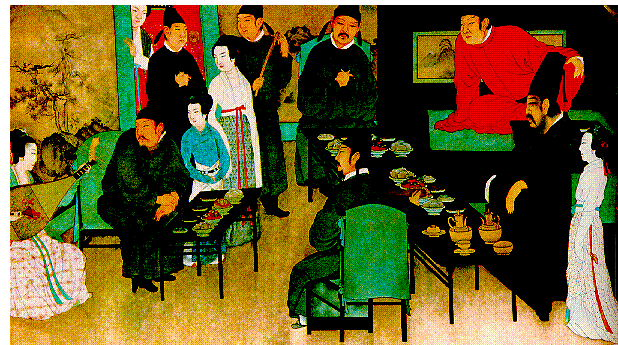
匪風發兮,
匪車偈兮.
顧瞻周道,
中心怛兮.
Generally speaking, history, especially ancient history bears the nature of
staying recondite, forlorn, but meanwhile incredibly exquisite.
It is not the aim of history to make its research achievements readily
appreciable to the public; the problems we want to solve in this academic field are neither
"profitable" nor "useful" myopically. However, the meaning
of historical studies is far beyond what most people might have recognized.
Albeit dwelling in another career, I never give up the endeavor to investigate Chinese history.
Since a very young age I have been inspired by such ancient sages as Master Zhizhe 智者大師,
Lu Xiangshan 陸象山 and Yi T'oegye 李退溪, and some relatively recent scholars.
A historian is supposed to be wise, erudite, and scrupulous.
A historian needs to be an intellectual as well,
while a mathematician doesn't (seem to) have to. I decided to become a mathematician at the age of 5.
At that time, I hadn't yet decided to become an intellectual, or a historian.
My interests lie in the following complex:
intellectual, institutional and political history of China and
East Asia from around the 8th century (for the purpose of pertinent origins we look back a little bit):
Sung, Chin, Po-hai (Parhae), Koryo, Chosun and the few later Chinese dynasties;
Buddhist and (Neo) Confucian interactions; Chinese, Korean and Japanese intellectual interactions
during the middle period; Jurchen and Manchu studies. I especially care about intellectual transitions
(reactions, influences, changes) during certain crucial points of history.
Some resources:
Harvard EALC, HEAL,
IAAS,
HBSF,
Manjuristics
HYI 哈燕社
Princeton
EAS
Columbia EALC
Penn EALC
Berkeley
EALC
UCLA
ALC
UW ALL
Academia Sinica
Uinversity of Hong Kong
Todai Indian Philosophy
IOC, Todai
Todai Toyoshi
Todai Sino Philosophy
PKU History Dept
PKU CLL
PKU Philosophy
The Canon Series
Shih3 Web
This is the link to the photos (to
view the Kanji pls use Japanese encoding)
that we took during our visit to Mt.Hieizan, Kyoto.
Hieizan was the
harbor of Japanese Buddhism, a place where Saicho, Kukai, Ennin, Honen, Shinran, Eisai,
Dogen, Nichiren, etc, all practiced their learning.
Back to home
